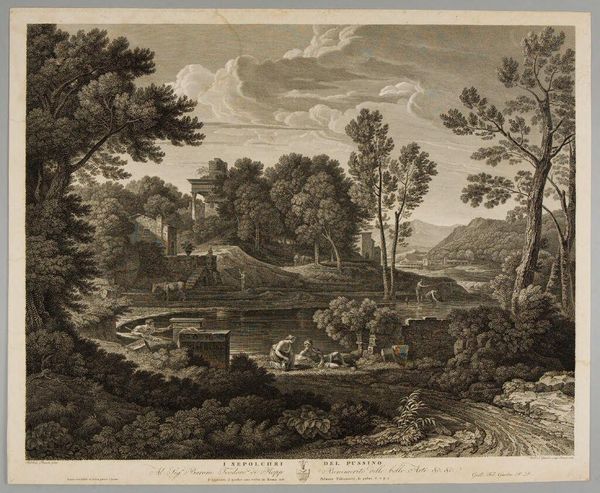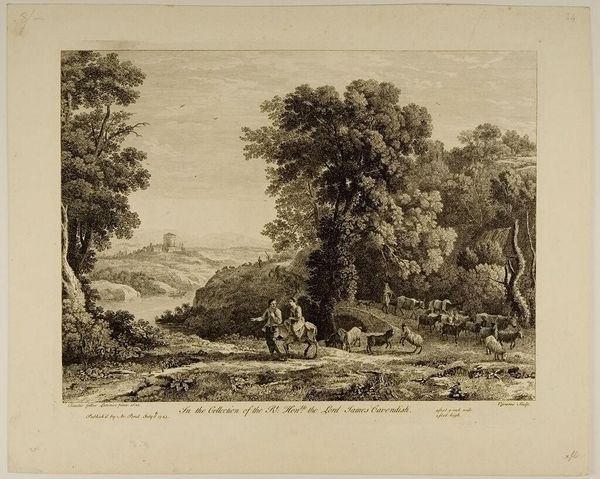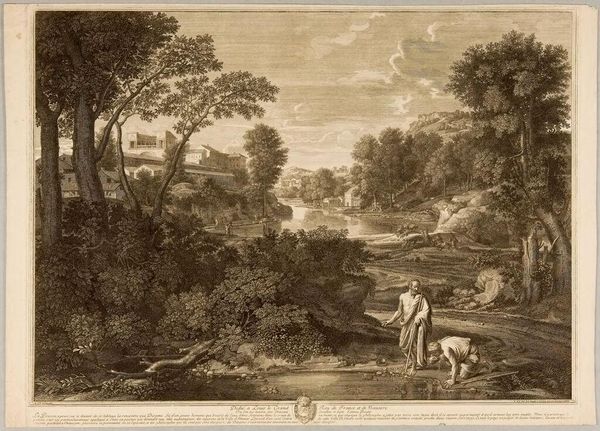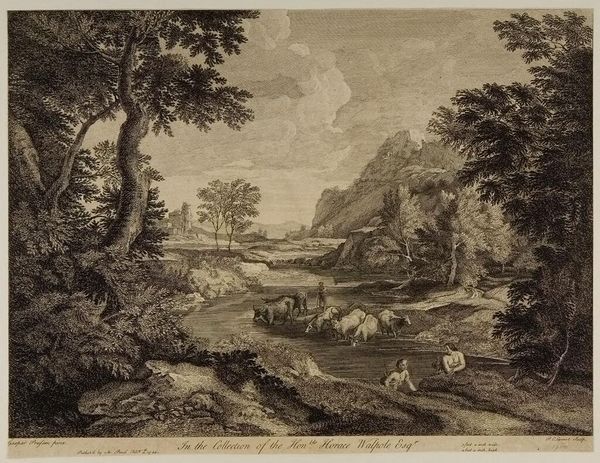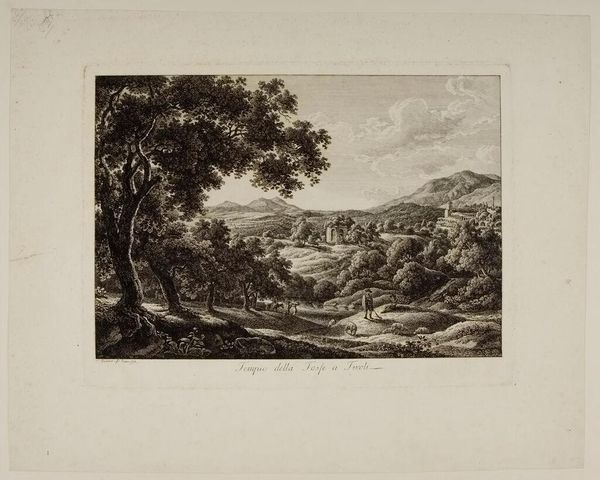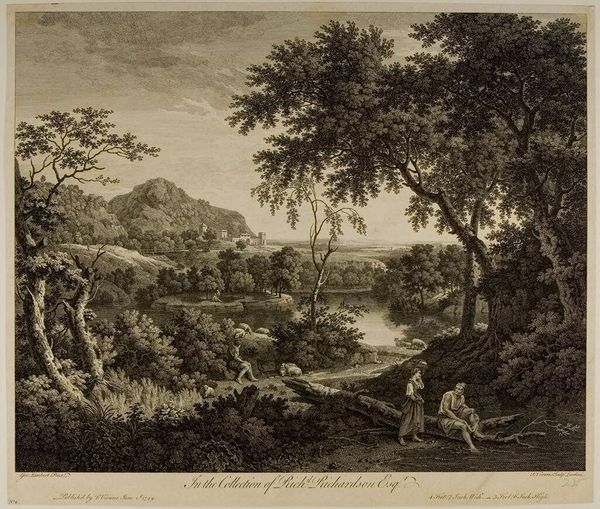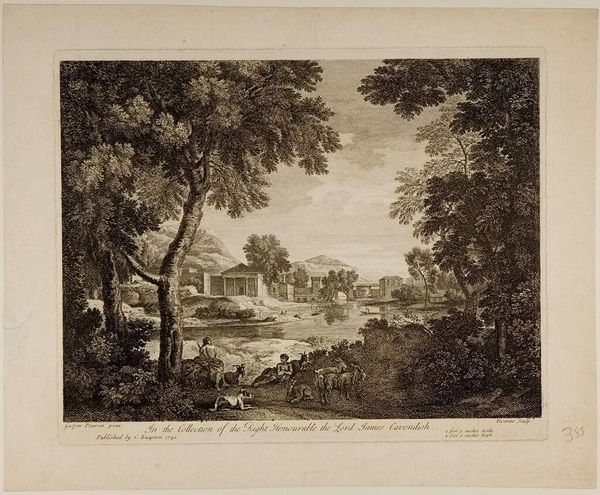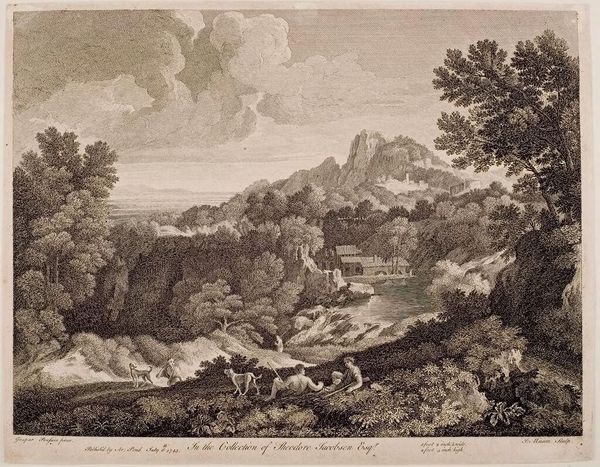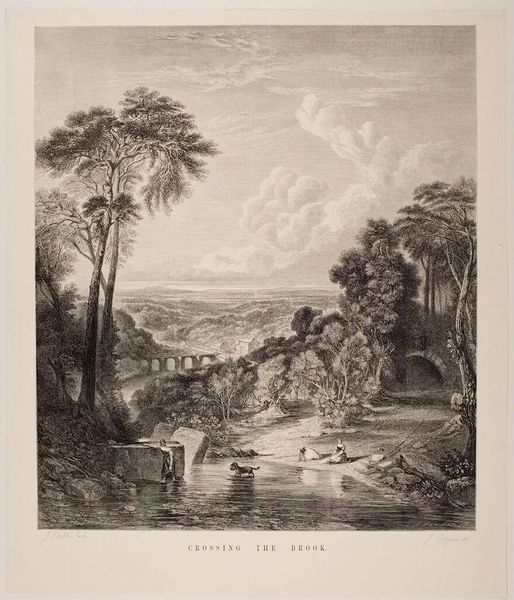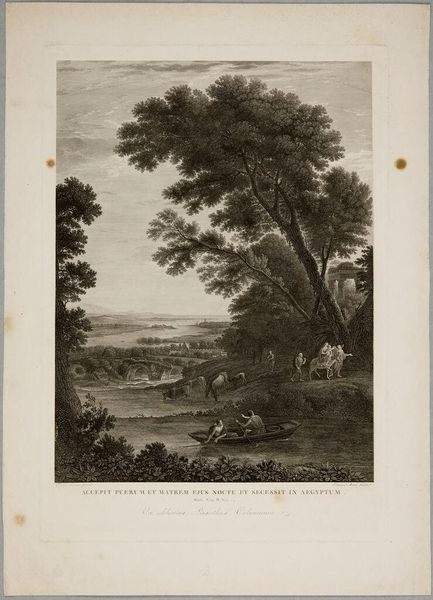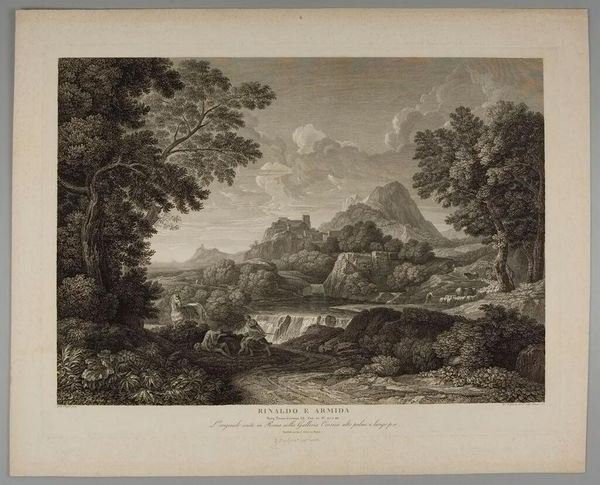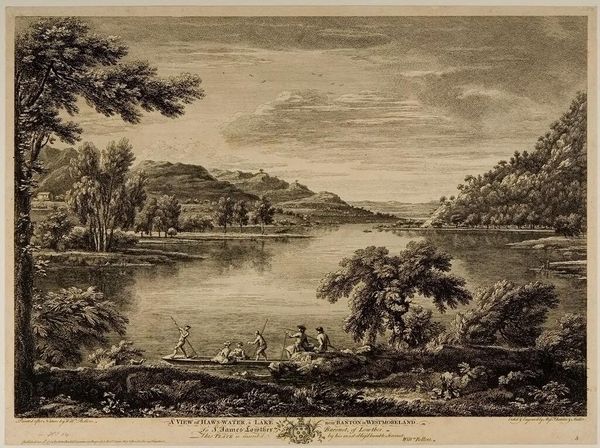
Copyright: CC0 1.0
Curator: Here we have Friedrich Wilhelm Gmelin's "The Tomb of Poussin." Gmelin, who lived from 1745 to 1821, captures an imagined scene, not a real place. Editor: It’s so melancholic. The sepia tones give it a washed-out, dreamlike quality, like a memory fading. Curator: Yes, it evokes a yearning for classical antiquity. Note how Gmelin carefully structures the landscape, using light and shadow to guide the eye. Editor: I’m drawn to the tiny figures near the water. Are they meant to represent an idyllic past, perhaps? Curator: Precisely. They reinforce the theme of pastoral simplicity. Gmelin uses the composition to create a sense of timelessness. Editor: It really pulls you in. You can almost hear the soft lapping of water against those weathered stones. So evocative. Curator: Indeed, Gmelin invites us to reflect on the passage of time and the enduring power of art. Editor: It’s a gentle reminder that even in ruins, beauty persists.
Comments
No comments
Be the first to comment and join the conversation on the ultimate creative platform.
